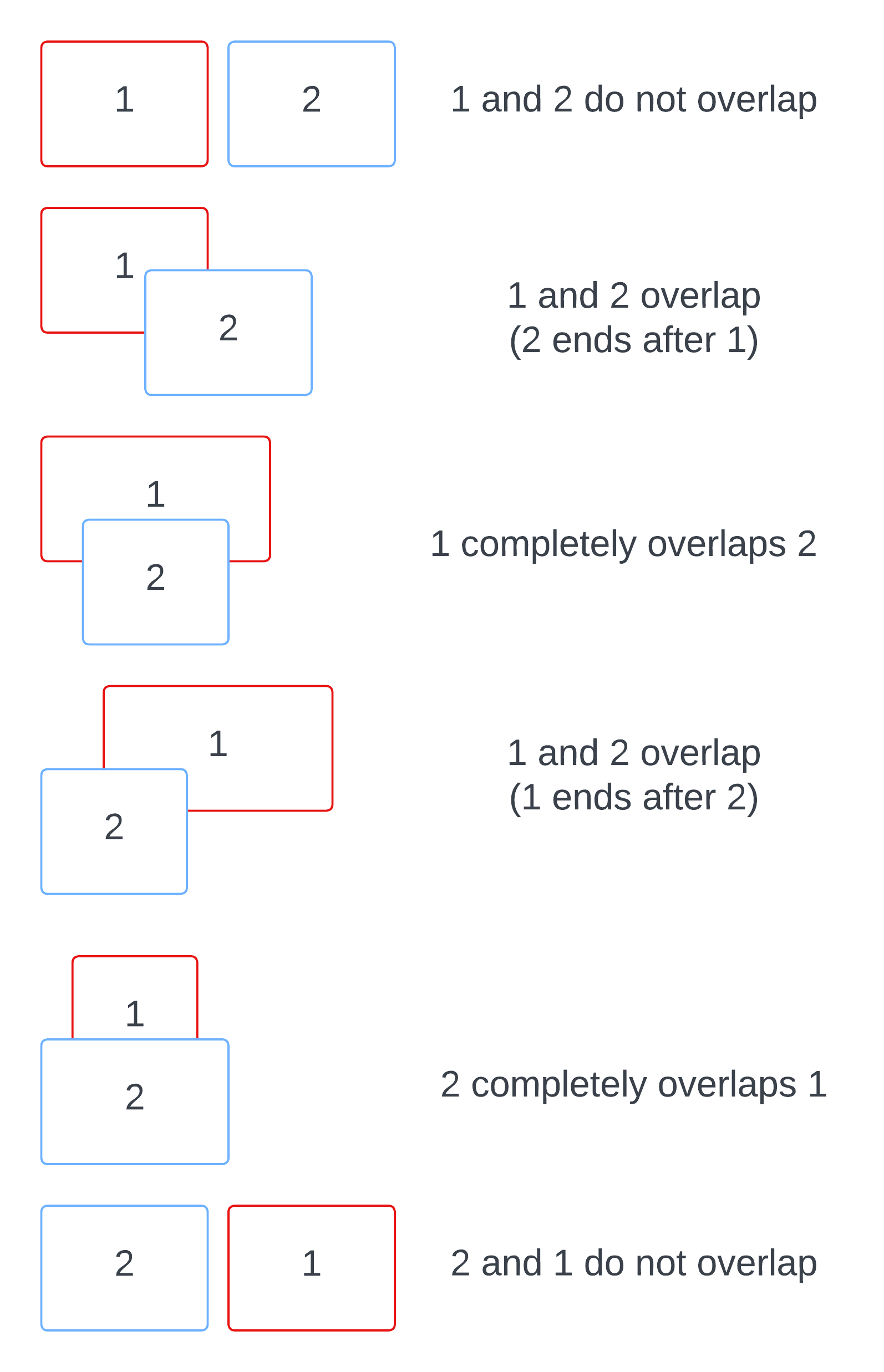Understanding Merge Intervals
 Vineeth Chivukula
Vineeth ChivukulaMerge Intervals involves combining overlapping intervals into a single interval. This problem is often encountered in scheduling applications, where intervals represent tasks or events that need consolidation. There are six different ways the intervals can relate to each other.

Process
Sorting: Start by sorting the intervals based on their starting points. This step is crucial because it allows us to merge overlapping intervals in a single pass efficiently.
Initialization: Initialize a list to store the merged intervals. Also, a variable should be initialized to keep track of the current interval being processed.
Iteration: Iterate through the sorted intervals. Check if each interval overlaps with the current interval being processed.
Merging: If the current interval overlaps with the interval being processed, merge them by updating the end of the current interval to be the maximum end of the two intervals. If they do not overlap, add the current interval to the merged interval list and start processing the new interval.
Termination: Continue this process until all intervals have been processed. The list of merged intervals will contain the final result.
When to Use
Scheduling Applications: To merge overlapping time intervals in schedules.
Data Consolidation: To consolidate overlapping data ranges or intervals.
Event Processing: To merge overlapping events or tasks.
How Does It Reduce Time Complexity?
Sorting: The initial sorting step has a time complexity of O(n log n), where n is the number of intervals.
Linear Scan: The subsequent merging step involves a single pass through the sorted intervals, resulting in O(n) time complexity.
Overall Time Complexity: The overall time complexity of the merge intervals algorithm is O(n log n) due to the sorting step, which dominates the linear scan.
Example problem for better understanding
Thank you for reading!
You can support me by buying me a book.
Subscribe to my newsletter
Read articles from Vineeth Chivukula directly inside your inbox. Subscribe to the newsletter, and don't miss out.
Written by

Vineeth Chivukula
Vineeth Chivukula
There's this guy who's mad about editing and programming. It's his jam, you know?